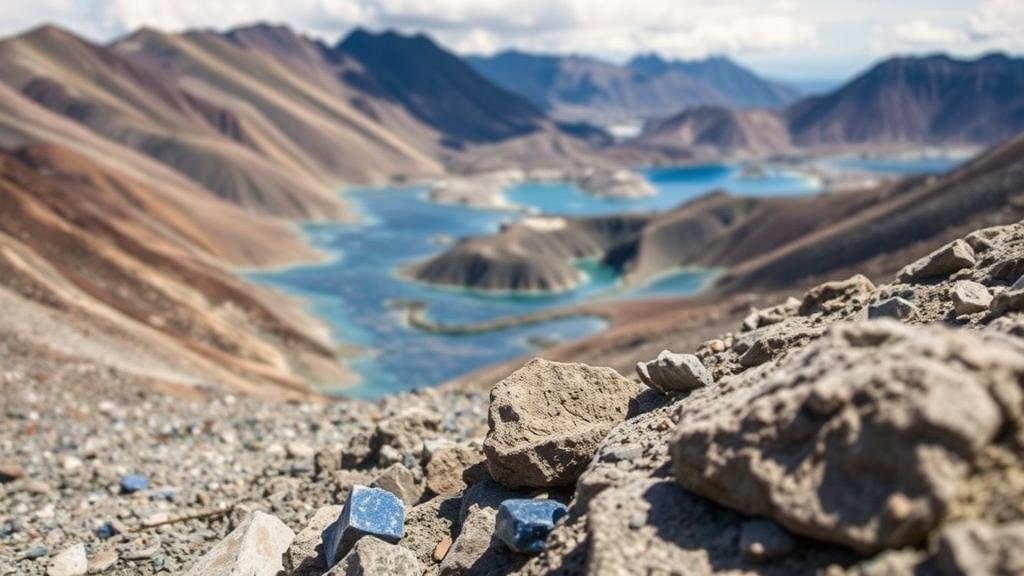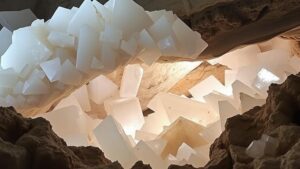Searching for lapis lazuli deposits in the rugged mountains of Chile.
Searching for Lapis Lazuli Deposits in the Rugged Mountains of Chile
Lapis lazuli, a striking blue gemstone prized for its beauty and historical significance, has captivated mineral collectors and rockhounds around the globe. Among the most notable deposits of lapis lazuli are those found in the remote and rugged mountains of Chile. This article serves as a guide to searching for these treasured gemstones, providing insights into the geological context, collection tips, and the vibrant history surrounding this alluring mineral.
The Geology of Lapis Lazuli
Lapis lazuli is primarily composed of lazurite, a complex sodium and aluminum borosilicate, along with other minerals including calcite and pyrite, which contribute to its distinctive appearance. Chilean lapis lazuli deposits are typically found within metamorphic rocks, often in areas with historical tectonic activity. The Andes Mountains, stretching the length of Chile, provide the ideal geological conditions for these deposits.
Some key geological features to note include:
- Metamorphic Conditions: High-pressure and high-temperature environments are critical for the formation of lapis lazuli.
- Tectonic Activity: The uplifting of the Andes due to plate tectonics creates conditions conducive to mineral formation.
- Mineral Composition: The presence of sodium, aluminum, and sulfur significantly influences the quality and color of the lapis lazuli.
Historical Significance
Lapis lazuli has been mined and valued since antiquity. In ancient Egypt, it was used in jewelry, amulets, and burial artifacts. stone is renowned for its deep blue hue, which was often associated with royalty and provisioned for grave goods. Texts indicate that lapis lazuli was traded along historic trade routes, making its way from the Andes to different parts of the world.
Locations of Interest in Chile
The most prominent lapis lazuli deposits in Chile are located near the town of Ovalle in the Coquimbo region and in the Sierra de Bocatoma mountains. Each area presents unique opportunities for mineral collectors:
- Ovalle Region: Known for its accessible mines, collectors can often find higher concentrations of lapis lazuli. irregular texture and variations in color found here make it a sought-after location.
- Sierra de Bocatoma: This remote area may pose challenges due to its rugged terrain; however, it is worth the effort for those in search of the finest specimens.
Practical Tips for Collectors
Finding lapis lazuli in Chile’s mountains is both an adventure and a practical pursuit. Below are several tips to aid rockhounds and mineral collectors:
- Preparation: Ensure you have proper gear, including hiking boots, clothing suited for changing weather conditions, and essential supplies like water and food.
- Geological Surveys: Use geological maps and mine reports to identify mineral-rich areas. Knowledge about the local geology can greatly increase your chances of success.
- Respect Local Regulations: Always obtain the necessary permits for mining and follow local environmentally protective laws.
Safety Considerations
When exploring the rugged terrain of Chile’s mountains, safety should be a top priority. Some considerations include:
- Navigate Carefully: Be aware of the potential hazards like loose rocks and steep slopes.
- Wildlife Awareness: Respectfully observe local wildlife; know what to look for and how to stay safe.
- Emergency Preparedness: Carry a first aid kit and know the nearest locations for assistance.
Real-World Applications and Collecting
Beyond aesthetic beauty, lapis lazuli has several applications in art, architecture, and even healthcare. The blue pigment derived from lapis lazuli was historically used in painting and decoration, known as ultramarine. Today, lapis lazuli continues to be a popular material for jewelry, enhancing its value both as a collectible and an investment.
As a collector, recognize the importance of provenance and authenticity. Familiarize yourself with the signs of quality lapis lazuli, such as a deep blue color and minimal calcite inclusions, to ensure that your collection remains valuable.
Actionable Takeaways
Embarking on the search for lapis lazuli deposits in the mountains of Chile combines the thrill of adventure with the potential for discovery. Whether you are a seasoned collector or a newcomer, understanding the geological, historical, and practical facets of this pursuit will enhance your experience:
- Prepare adequately and respect local laws to ensure a successful trip.
- Use geological resources to guide your search effectively.
- Embrace both the beauty and significance of lapis lazuli to appreciate its true value.
By following these guidelines, rockhounds can create lasting memories while unearthing the stunning treasures of Chile’s mountains.



